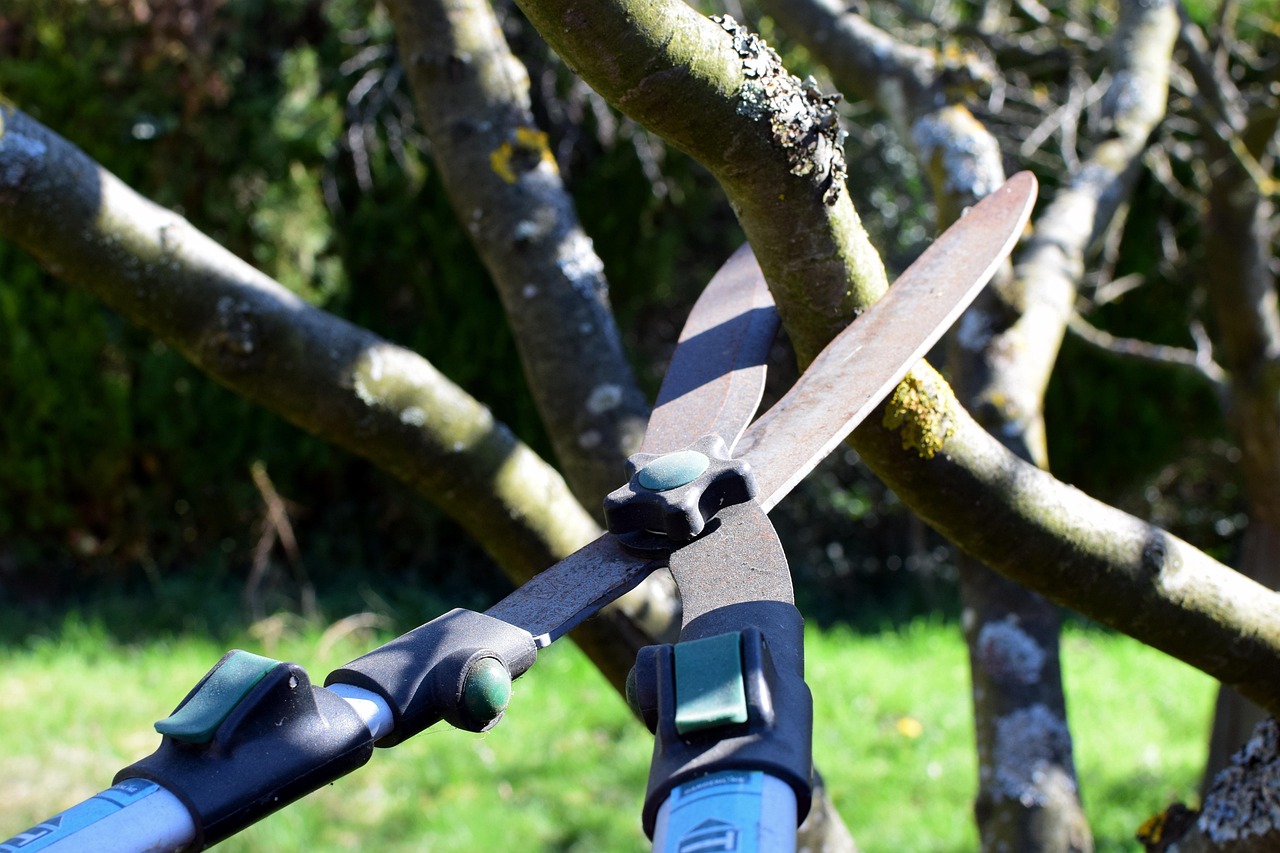To prune a Dragon Tree effectively, focus on cutting back overgrown stems and removing any dead or yellowing leaves. Use clean, sharp tools to prevent infection. Prune during the growing season for optimal recovery.
Understanding Dragon Trees
The Dragon Tree, scientifically known as Dracaena draco, is a popular indoor plant known for its striking appearance and low maintenance requirements. This unique tree features long, sword-like leaves that grow in rosettes at the top of thick stems. Native to the Canary Islands, Cape Verde, and Madagascar, the Dragon Tree adapts well to indoor environments and can thrive in various light conditions.

One of the reasons indoor gardeners appreciate Dragon Trees is their ability to purify the air. They remove toxins and improve indoor air quality, making them an excellent choice for homes and offices. However, like all plants, they require periodic pruning to maintain their health and appearance.
Why Prune Your Dragon Tree?
Pruning serves multiple purposes for your Dragon Tree. Regular trimming helps maintain its shape, encourages new growth, and removes any unhealthy parts of the plant. Additionally, it can prevent the plant from becoming too leggy or top-heavy, which can lead to structural issues.
Below are some key benefits of pruning your Dragon Tree:

- Encourages Healthy Growth: Pruning stimulates new growth by removing older, unproductive leaves.
- Improves Appearance: A well-pruned Dragon Tree looks more attractive and bushy.
- Removes Dead or Dying Leaves: This helps prevent pests and diseases.
- Controls Size: Regular pruning helps keep the plant at a manageable size for indoor spaces.
When to Prune
The best time to prune a Dragon Tree is during its active growing season, which typically runs from spring to early summer. During this period, the plant is more resilient and can recover quickly from any cuts made. Pruning during dormancy, such as in winter, can stress the plant and hinder its growth.
It’s essential to monitor your plant closely. If you notice yellowing leaves or excessive leggy growth at any time of the year, it may be time for a trim. Regular inspection will help you determine when pruning is necessary.
How to Prune Your Dragon Tree
Proper pruning techniques are crucial for the health of your Dragon Tree. Here are some steps to follow:

- Gather Your Tools: Use clean, sharp scissors or pruning shears for precise cuts. Disinfect your tools with rubbing alcohol to prevent any disease transfer.
- Assess the Plant: Look for any dead or damaged leaves that need removal. Check for overgrown stems that might need shortening.
- Make the Cuts: Trim back overgrown stems to just above a leaf node or growth point. For leaves, cut at the base where it meets the stem.
- Avoid Over-Pruning: Always leave enough foliage on the plant to ensure it can photosynthesize effectively.
- Clean Up: Remove any debris from around the plant to reduce the risk of pests and diseases.
Common Mistakes to Avoid
While pruning seems straightforward, there are some common pitfalls that indoor gardeners should avoid:
- Pruning Too Much: Taking off too much foliage can shock the plant and stunt its growth.
- Poor Timing: Pruning during the dormant season can lead to stress and hinder growth.
- Neglecting Tools: Using dirty or dull tools can introduce diseases or cause damage.
- Ignoring Signs of Stress: Not paying attention to your plant’s health may lead to missed opportunities for timely pruning.
Aftercare Following Pruning
Your work doesn’t end once you’ve finished pruning. Providing proper aftercare is vital to help your Dragon Tree recover and thrive. Here are some tips:
- Watering: Ensure the plant receives adequate water after pruning. However, avoid overwatering as this can lead to root rot.
- Temperature: Keep the plant in a stable environment free from drafts and sudden temperature changes.
- Lighting: Place your pruned tree in bright, indirect sunlight to promote healthy regrowth.
- Nutrients: Consider applying a balanced fertilizer about a month after pruning to encourage new growth.
By following these guidelines and understanding your Dragon Tree’s needs, you can ensure it remains healthy and vibrant for years to come.

Signs Your Dragon Tree Needs Pruning
Before undertaking any pruning, it’s crucial to recognize the signs that indicate your Dragon Tree requires attention. Understanding these signs allows you to act promptly and maintain the health of your plant.
- Yellowing Leaves: If you notice leaves turning yellow, it may signal that they are dying or not receiving enough light.
- Leggy Growth: A Dragon Tree that is becoming tall and spindly often needs pruning to encourage fuller foliage.
- Brown Tips: The tips of leaves turning brown can indicate overwatering or low humidity, both of which might necessitate careful trimming.
- Pest Infestation: If pests are present, removing affected leaves can help control the infestation and promote new growth.
Tools Needed for Pruning
Using the right tools can make a significant difference in the pruning process. Here is a list of essential tools that every indoor gardener should have on hand:
- Pruning Shears: Invest in high-quality, sharp pruning shears for clean cuts that minimize damage.
- Gloves: Protect your hands with gardening gloves, especially if your plant has sharp leaves or if you’re handling soil.
- Disinfectant: Keep rubbing alcohol or a bleach solution available to sanitize your tools before and after use.
- Watering Can: Ensure you have a watering can ready for post-pruning care.
Best Pruning Techniques for Dragon Trees
To achieve the best results when pruning your Dragon Tree, consider employing the following techniques:
Cutting Back Stems
When cutting back stems, aim to make clean cuts just above a leaf node. This encourages new growth from that point. Here is a step-by-step guide:
- Identify the stem you want to cut back.
- Locate the nearest leaf node where you want to make the cut.
- Use sharp pruning shears to cut at a 45-degree angle above the node.
- Remove any dead or damaged portions of the stem as well.
Trimming Leaves
For trimming leaves, focus on removing only those that are yellow, brown, or have signs of disease. Follow these steps:
- Examine each leaf for signs of damage or disease.
- Use your pruning shears to cut the leaf off at its base, close to the stem.
- Ensure not to leave any stubs, as they can lead to rot.
Maintaining Plant Health Post-Pruning
After pruning, maintaining your Dragon Tree’s health is essential for recovery and growth. Consider these aspects of care:
Light Requirements
Your Dragon Tree thrives in bright, indirect light. After pruning, ensure it receives adequate lighting by positioning it near a window but out of direct sunlight. This balance encourages healthy regrowth while preventing leaf burn.
Watering Schedule
The watering schedule may need slight adjustments post-pruning. Here are some tips:
- Monitor Soil Moisture: Check the top inch of soil; water only if it feels dry to the touch.
- Avoid Overwatering: Too much water can lead to root rot. Allow the soil to dry out between waterings.
- Humidity Levels: Maintain moderate humidity levels; consider misting your plant if you live in a dry climate.
Pest Prevention and Control
Pests can be a significant issue for indoor plants like the Dragon Tree. Here are some preventive measures and control strategies:
- Regular Inspection: Frequently check your plant for signs of pests such as webbing or small insects.
- Cleansing Routine: Wipe the leaves with a damp cloth to remove dust and deter pests.
- Natural Remedies: Use insecticidal soap or neem oil as natural pest control options if needed.
Common Pests Affecting Dragon Trees
| Pest | Description | Treatment |
|---|---|---|
| Aphids | Tiny green or black insects that suck sap from leaves. | Use insecticidal soap or neem oil. |
| Spider Mites | Small arachnids that create fine webs and cause stippling on leaves. | Mist plants regularly and apply miticides if necessary. |
| Mealybugs | Cotton-like masses on stems and leaves that drain plant nutrients. | Remove by hand and treat with neem oil or soap solution. |
| Scale Insects | Tiny, hard-shelled insects attached to leaves and stems. | Scrape off scales manually and treat with horticultural oil. |
By recognizing signs that indicate your Dragon Tree needs pruning, using appropriate tools, applying effective techniques, and ensuring proper care post-pruning, you can keep your indoor garden thriving. Managing pests is also crucial in maintaining the overall health of your plant. With these strategies in place, your Dragon Tree will remain a stunning addition to your home or office space for years to come.
Propagating Dragon Trees
In addition to pruning, propagating your Dragon Tree can be a rewarding way to expand your indoor garden. This process allows you to create new plants from cuttings or offsets. Below are some effective methods for propagating your Dragon Tree.
Propagation by Stem Cuttings
Stem cuttings are one of the most common methods for propagating Dragon Trees. Here’s a step-by-step guide:
- Select a Healthy Stem: Choose a healthy stem that is at least 6 inches long and has several leaves.
- Make the Cut: Use clean, sharp pruning shears to make a cut just below a leaf node.
- Let It Callous: Allow the cutting to dry for a few hours or overnight, which helps prevent rot when planted.
- Prepare the Potting Mix: Fill a small pot with well-draining potting mix.
- Plant the Cutting: Insert the cutting into the soil, ensuring that at least one leaf node is buried.
- Water Lightly: Water the soil lightly to settle it around the cutting, but avoid overwatering.
- Provide Humidity: Cover the pot with a plastic bag or a clear container to maintain humidity until roots develop.
- Place in Indirect Light: Keep the cutting in a warm location with bright, indirect light.
Propagation by Offsets
If your Dragon Tree has produced offsets (small plants growing at the base), you can propagate these as well. Follow these steps:
- Identify Offsets: Look for offsets that have their own roots and can be separated from the main plant.
- Remove Offsets: Gently twist or cut the offsets away from the main plant, ensuring you do not damage the roots.
- Potting: Plant each offset in its own pot filled with well-draining potting mix.
- Watering: Water lightly and allow excess water to drain.
- Care: Treat offsets like young plants, providing them with bright, indirect light and maintaining humidity as they acclimate.
Choosing the Right Soil for Your Dragon Tree
The type of soil you use plays a significant role in your Dragon Tree’s overall health. A well-draining soil mix is essential to prevent root rot, which can occur if the roots sit in water. Here are some soil options to consider:
- Cactus Mix: A commercial cactus or succulent mix often provides excellent drainage and aeration.
- Palm Mix: Palm potting mixes are also suitable, as they tend to be lightweight and well-aerated.
- DIY Potting Mix: You can create your own mix using equal parts potting soil, perlite, and sand for optimal drainage.
Common Problems and Solutions
Even with proper care, Dragon Trees may experience problems. Identifying these issues early can help you mitigate their effects. Here are some common problems and their solutions:
Leaf Dropping
If your Dragon Tree’s leaves start dropping, it could be due to several factors:
- Overwatering: Ensure you’re not watering too frequently. Allow the top inch of soil to dry out before watering again.
- Pest Infestation: Check for any signs of pests that might be causing stress.
- Environmental Changes: Sudden changes in temperature or location can shock the plant. Try to maintain a consistent environment.
Browning Leaf Tips
Browning leaf tips can indicate various issues, including:
- Low Humidity: Dragon Trees prefer moderate humidity. Consider using a humidifier or pebble tray if your home is dry.
- Nutrient Deficiency: If you haven’t fertilized in a while, consider using a balanced houseplant fertilizer to replenish nutrients.
Pests and Diseases
Pests such as spider mites, mealybugs, and scale insects can affect the health of your Dragon Tree. Here’s how to address these problems:
- Regular Monitoring: Check your plant regularly for signs of infestation. Early detection is key.
- Pest Control Methods: Use insecticidal soap or neem oil for organic pest control.
- Disease Management: If disease is suspected, remove affected leaves and improve air circulation around the plant.
Pest Management Strategies
Implementing effective pest management strategies can keep your Dragon Tree healthy and thriving. Here are some tactics you might find useful:
- Cultural Controls: Ensure good air circulation and avoid overcrowding plants to reduce pest attraction.
- Biological Controls: Introduce beneficial insects like ladybugs that prey on common pests.
- Chemical Controls: Use pesticides as a last resort. Always follow label instructions and consider the impact on beneficial insects.
By employing proper propagation methods, choosing suitable soil, addressing common problems promptly, and implementing effective pest management strategies, you will enhance your Dragon Tree’s health and longevity in your indoor garden. These practices will ensure that your plant continues to flourish and beautify your space for years to come.
Additional Care Tips for a Thriving Dragon Tree
Ensuring the long-term health of your Dragon Tree involves more than just pruning and pest management. Here are some additional care tips that can help your plant thrive in an indoor environment:
Fertilization
Regular fertilization is essential for maintaining healthy growth and vibrant foliage. Here are some guidelines for fertilizing your Dragon Tree:
- Type of Fertilizer: Use a balanced, water-soluble fertilizer formulated for houseplants. Look for a fertilizer with equal parts nitrogen, phosphorus, and potassium.
- Frequency: Fertilize your Dragon Tree every four to six weeks during the growing season (spring and summer). Reduce or stop fertilization during the dormant months (fall and winter).
- Application: Dilute the fertilizer according to package instructions and apply it to moist soil to prevent root burn.
Repotting
As your Dragon Tree grows, it may outgrow its pot, leading to root-bound conditions. Here are signs that it may be time to repot:
- Visible Roots: If roots are growing out of the drainage holes or circling around the surface of the soil.
- Stunted Growth: If you notice a significant decline in growth or leaf production.
- Watering Issues: If the soil dries out very quickly or retains too much moisture.
When repotting, choose a pot that is one size larger and use fresh, well-draining potting mix. Be gentle with the roots as you transfer the plant to its new container.
Seasonal Adjustments
Understanding how seasonal changes affect your Dragon Tree can greatly benefit its health. Here’s what to consider:
- Winter Care: During winter months, reduce watering and do not fertilize, as the plant’s growth slows down. Keep it in a warm spot away from drafts.
- Summer Placement: In summer, consider moving your Dragon Tree outdoors for some fresh air and natural sunlight, but ensure it’s gradually acclimated to avoid shock.
Final Thoughts
Caring for a Dragon Tree can be a fulfilling endeavor for indoor gardeners. With proper pruning, pest management, and attention to environmental needs, this plant can thrive beautifully in your home. Key takeaways for maintaining a healthy Dragon Tree include:
- Regular Pruning: Keep your plant well-shaped and remove any unhealthy foliage to encourage new growth.
- Pest Awareness: Stay vigilant about pests and diseases, using appropriate management techniques when necessary.
- Optimal Care Practices: From watering and fertilizing to choosing the right soil and potting options, each aspect of care contributes to your plant’s overall health.
- Enjoy the Journey: Gardening is a learning experience. Take time to observe your Dragon Tree and adapt your care routine based on its responses.
Your Dragon Tree can become a stunning centerpiece in your indoor garden, enhancing the aesthetic of your space while purifying the air. With dedication and the right techniques, you will enjoy the beauty and benefits of this unique plant for many years to come.
